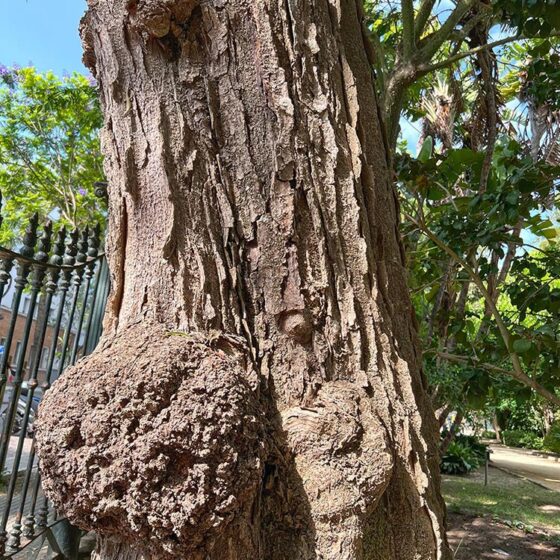Honey Locust
Gleditsia triacanthos
Gleditsia triacanthos, the Honey Locust, is a species of deciduous tree from the Fabaceae family.
The genus is dedicated to the German botanist Johan Gottlieb Gleditsch (1714-1786), professor and director of the Botanical Garden in Berlin. The specific epithet is formed by the Latin prefix three-, tria- = three, and the Greek word akantha = spine, sting, in allusion to its enormous spines, often branched into three points, hence its popular name.
It is a fast growing tree that can reach up to 20-30 m in height in less than 40 years. It has great capacity of regrowth by the roots and is resistant to pruning and drought.
It is a dioecious tree with a solid trunk and a wide crown. The pinnate leaves are very large (up to 40 cm long), stipulated, with a petiole of 3-5 cm. They have 8-20 pairs of leaflets, oblong or oblong-elliptic. The inflorescences can reach up to 10 cm. These flowers are greenish-yellowish. The fruit is a glabrous legume which is compressed, straight or somewhat curved or spirally twisted. It is also indehiscent and has a fleshy interior which at times can be pulpy, and it is sweet and edible. It turns a reddish-chocolate colour when ripe.
It is native to the southeastern United States, in the basin of the Mississippi River (Virginia), and also inhabits the southern Great Plains, Texas and northern Mexico. Today, it is cosmopolitan.
It was introduced in Europe from eastern North America in the seventeenth century. It has adapted perfectly to the climate of Spain, and many other countries. It is used as an alignment in parks and gardens for its elegant appearance.
Its wood is very resistant and non-biodegradable when in contact with water. This meant that it was extremely useful for the making of wheels on carts and, currently, it is used in cabinetmaking.







